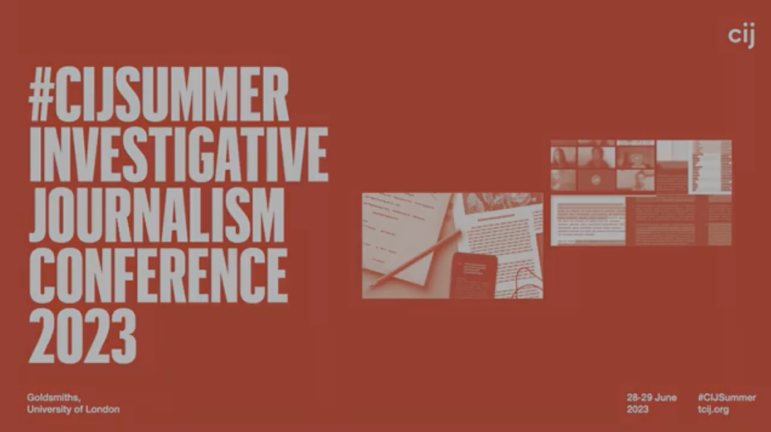Is Investigative Reporting in ICU?
Two weeks ago, Jon Stewart at The Daily Show “investigated” investigative reporting and discovered it no longer existed, having been “disappeared” by cost-conscious media executives. The Daily Show correspondent John Oliver found that if some shadow of investigative journalism still walked the earth, it was only in the fictional newsroom of HBO’s “The Newsroom.”
The episode was achingly funny because it rang so true. But is it really so? It’s true that in the last five years, we’ve seen a drastic decline in the investigative capacity of American newsrooms. Hit by the twin blows of economic crisis and collapsing business models, newspapers and TV stations eliminated or downsized their investigative units. Yet at the same time, the muckraking spirit remains alive. In the past few months, for example, The New York Times, Bloomberg and The Wall Street Journal have published groundbreaking investigations on the wealth of China’s Communist Party leaders. For sure, these are the guys in the big league, but amazing digging is also being done by smaller news organizations, including the new investigative reporting nonprofits, some of which are collaborating with public broadcasters.
We expect nonprofits and public broadcasters to do watchdog work. What’s surprising is that in the last couple of weeks, the Gawker affiliate Deadspin stunned the sports world with its revelatory report on Notre Dame linebacker Manti Te’o’s fictional girlfriend. The report, as its authors explained in a Pro Publica podcast, was the product of good-old-fashioned digging in the new digital realms of Twitter and Facebook.
I know that a few swallows do not a summer make and that outstanding work notwithstanding, the anxiety even in the big newsrooms is palpable. The question in both for-profit and nonprofit investigative units is: How long can this be sustained?
It’s a question that’s not possible to answer. We are in the midst of a media revolution. Clarity is rare in revolutionary times. Outcomes are not certain, and predictions are cheap precisely because of the uncertainty.
I’ve lived through a revolution – sort of one, when Ferdinand Marcos was ousted in a popular uprising in the Philippines in 1986. In hindsight, it’s easy to say that we knew or should have known that the democratic transition was going to be tumultuous and difficult. The truth is we didn’t and couldn’t have known. And the choices that our leaders and our people made in the early years of the the transition laid the ground for where the country is in now.
Writing about the American media, Harvard historian Paul Starr described “constitutive moments,” key periods in the past 150 years when political choices and technological developments determined the shape of the U.S. media. This, says James Fallows in his review of Starr’s The Creation of the Media, suggests “a belief that societies and their governments can affect the path that technologies and markets take, rather than an acceptance of whatever the path turned out to be as inevitable.”
Starr stresses the importance of individual and institutional agency during constitutive moments. We live in such a moment today as the media system is being transformed by the digital revolution.The outcomes are not inevitable. A lot really depends on the choices we make now. That’s why I think that accepting the narrative of investigative reporting’s slow and inevitable demise will only make the sad ending come true.
This week, my class at the Columbia Journalism School hosted an amazing panel of journalists doing cutting-edge work in accountability journalism. Sarah Cohen, the Pulitzer Prize winner who heads the New York Time computer-assisted reporting team, talked about the new tools now available to journalists for data crunching and document analysis. Investigative reporting is labor-intensive, but these new tools, said Cohen, “let machines do what machines do best,” allowing for efficiencies that enable journalists to accomplish more with less.
Gabriel Dance, the interactive editor of The Guardian US, showed examples of interactive storytelling that make it easy – and fun – for readers to absorb large amounts of complex information. These interactives allow for deeper audience engagement. “There’s lots of lolz online,” he said, “everyone wants to leave your website .” Immersive storytelling makes readers stay awhile longer.
John Christie and Naomi Schalit of PineTree Watchdog, a news site run by the nonprofit Main Center for Public Interest Reporting, talked about keeping accountability journalism alive in Maine, where hardly any news organization still does in-depth reporting. There are only seven dailies in the whole state, Christie said, and so few are keeping an eye on the state government. Barely three years old, the Maine Center has a three-person staff and an annual budget of less than $200,00o. It syndicates its stories to 32 news organizations and fills a real gap.
“Democracy is practiced at the local level,” said Schalit. “We need investigative reporting in state houses and city councils, in places where people live and work, and where you can get results.”
All these efforts add up. In many parts of the U.S. and of the world, individual journalists and news organizations are making the choice to keep watchdog reporting alive through a combination of determined digging, new funding models. technological fixes and new ways of telling the story and engaging audiences.

” credit=”
Despite what Jon Stewart says, the death of investigative reporting – much foretold and prematurely mourned – is not writ in the stars.
Sheila Coronel is director of the Stabile Center for Investigative Journalism at Columbia University. This is reprinted from her blog, Watchdog Watcher.









